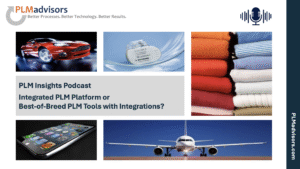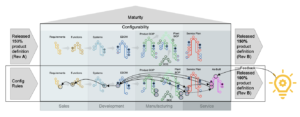
You Need a PLM Strategy!
Other PLM Insights You Need a PLM Strategy! Regardless of whether you already have a PLM system in your company that enables some processes or don’t have anything, whether you

Other PLM Insights You Need a PLM Strategy! Regardless of whether you already have a PLM system in your company that enables some processes or don’t have anything, whether you

Other PLM Insights Podcast: Integrated PLM Platform or Best-of-Breed PLM Tools with Integrations? In this episode of the PLM Insights Podcast, host Andreas Lindenthal and guest Joseph Frascati explore whether

Andreas Lindenthal, Founder and Managing Partner of PLMadvisors and Joseph Frascati, former VP of IT at Proterra and CIO at Archer discuss real life experiences and lessons learned from PLM software and implementation partner selections.

Other PLM Insights Introduction to PLM Podcast In this fully AI generated podcast based on PLMadvisors content, AIda and AIden introduce Andreas Lindenthal, founder and Managing Partner of PLMadvisors and

Other PLM Insights PLM and AI Artificial Intelligence (AI) is transforming the modern workplace at an unprecedented pace, revolutionizing how we approach tasks, make decisions, and drive innovation. From automating

Other PLM Insights PLM and Configuration Management Best Practices: Part Traceability and Revisions In aerospace and other regulated industries it is important to know the exact configuration of a product
Other Insights Connecting Product and Strategy – The Innovation Gap Co-authored with Dr. Kyle Murphy According to Boston Consulting Group (BCG), 79% of companies worldwide see innovation as a top-three
More PLM Insights The Digital Thread in BOM and Configuration Management What is the Digital Thread? How does implementing a Digital Thread specifically in the areas of BOM and Configuration
PLM Accelerators PLMgpt PLM Technology Guide PLM Maturity Assessment Tool PLM Requirements Specification PLM Use Cases PLM Best Practice Process Maps PLM RFP Template PLM Benefits and ROI Calculator PLM
PLM Experts Q&A Ask the PLM Experts: How do we use GetImplementing() in RFLP structure? PLM Experts Answer: The `getImplementing()` function in an RFLP (Requirements, Functional, Logical, Physical) structure is

